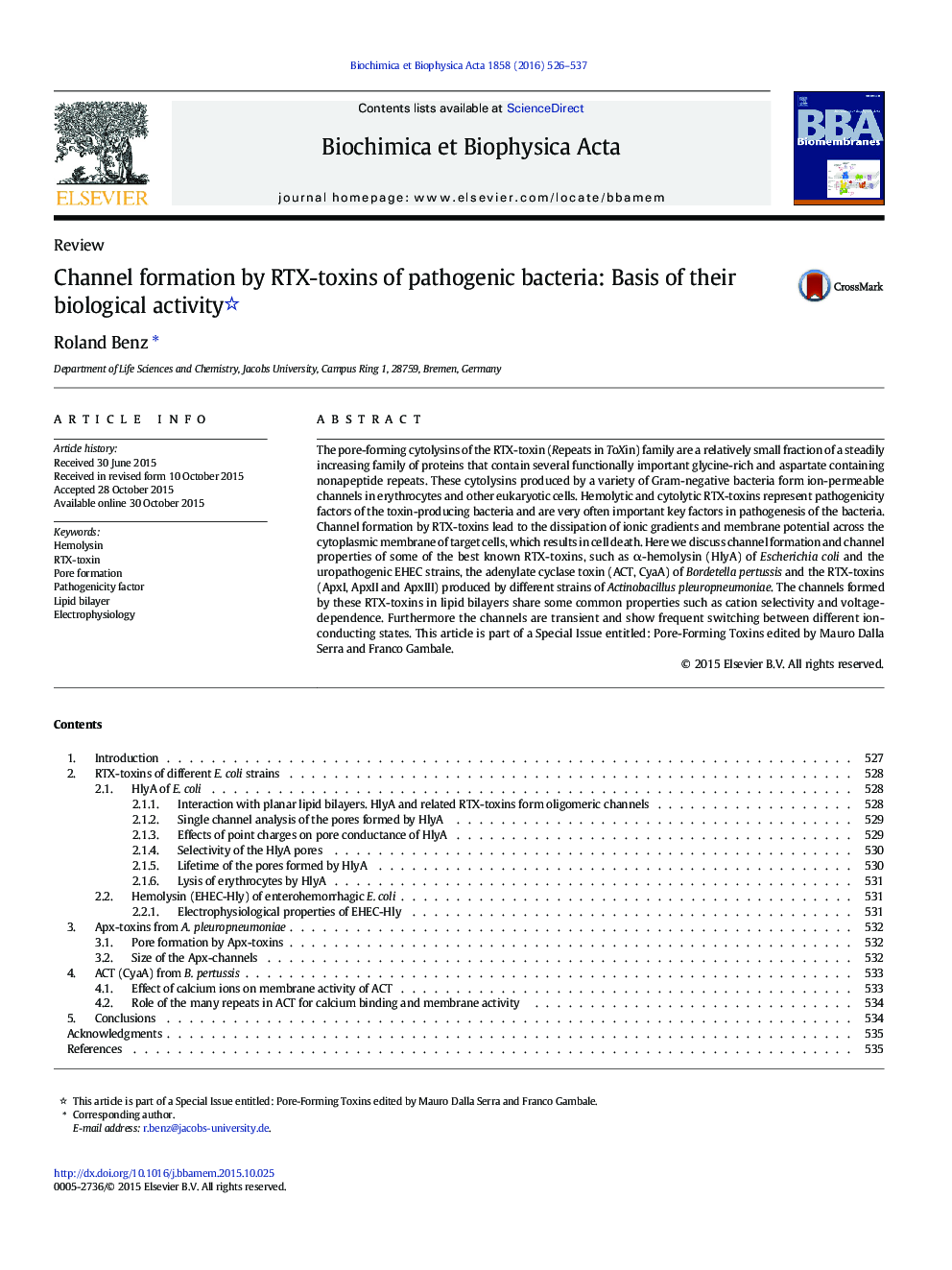| Article ID | Journal | Published Year | Pages | File Type |
|---|---|---|---|---|
| 1943999 | Biochimica et Biophysica Acta (BBA) - Biomembranes | 2016 | 12 Pages |
•This review focuses on cytolytic toxins of the Repeat-in-ToXin (RTX) family of proteins that comprises more than 1000 members.•Characteristic for the RTX-toxins is the presence of many glycine-rich and aspartate containing nonapeptide repeats.•Binding of calcium ions to the repeats and formation of formation of ß-roll motifs is important for their biological activity.•Prototype of the hemolytic or cytolytic RTX-toxins is hemolysin HlyA of E. coli. All RTX-toxins are pathogenicity factors.•The RTX-toxins act on target cells by the formation of transient ion-permeable channels having a high selectivity for cations.•The review provides a detailed description of the characteristics of different RTX-toxins of Gram-negative bacteria.
The pore-forming cytolysins of the RTX-toxin (Repeats in ToXin) family are a relatively small fraction of a steadily increasing family of proteins that contain several functionally important glycine-rich and aspartate containing nonapeptide repeats. These cytolysins produced by a variety of Gram-negative bacteria form ion-permeable channels in erythrocytes and other eukaryotic cells. Hemolytic and cytolytic RTX-toxins represent pathogenicity factors of the toxin-producing bacteria and are very often important key factors in pathogenesis of the bacteria. Channel formation by RTX-toxins lead to the dissipation of ionic gradients and membrane potential across the cytoplasmic membrane of target cells, which results in cell death. Here we discuss channel formation and channel properties of some of the best known RTX-toxins, such as α-hemolysin (HlyA) of Escherichia coli and the uropathogenic EHEC strains, the adenylate cyclase toxin (ACT, CyaA) of Bordetella pertussis and the RTX-toxins (ApxI, ApxII and ApxIII) produced by different strains of Actinobacillus pleuropneumoniae. The channels formed by these RTX-toxins in lipid bilayers share some common properties such as cation selectivity and voltage-dependence. Furthermore the channels are transient and show frequent switching between different ion-conducting states. This article is part of a Special Issue entitled: Pore-Forming Toxins edited by Mauro Dalla Serra and Franco Gambale.
